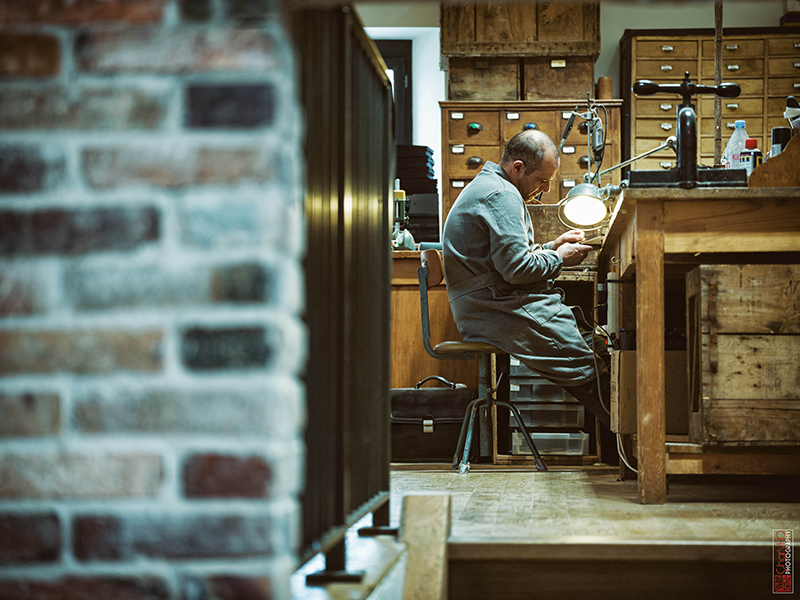In the Studio with Bespoke Eyewear Makers Maison Bonnet
Heading the family firm that created Yves Saint Laurent’s signature eyewear, Franck Bonnet handcrafts spectacles and sunglasses that are visions of character and individuality
Heading the family firm that created Yves Saint Laurent’s signature eyewear, Franck Bonnet handcrafts spectacles and sunglasses that are visions of character and individuality
From an early age, Franck Bonnet knew where his future lay. Hanging out with the craftsmen at his father’s eyewear business in Burgundy, France, he absorbed their knowledge and studied their art, ultimately becoming CEO of Maison Bonnet. “I’d spend my Wednesdays with the craftsmen, trying to create little objects with the materials at my disposal,” remembers Bonnet. “Bespoke wasn’t viewed the same way in the 1980s, so my father was unsure, but I insisted. I was 18 and as the eldest of three, it was my responsibility to take over the family business.”
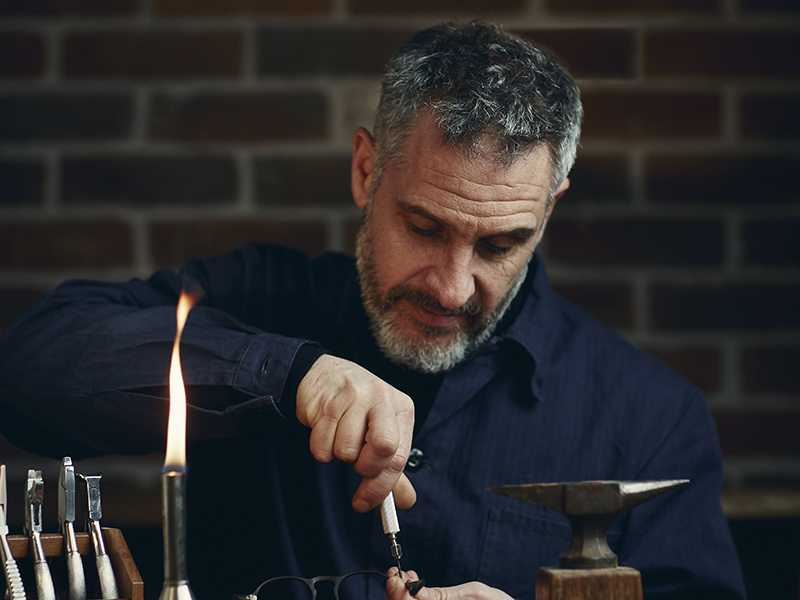
Bonnet, along with brothers John and Steven, is the fourth generation of the family atelier that began in the 1930s. “We’re guardians of an exceptional know-how, cultivated over generations and we need to pass on those skills, reflexes, and gestures, the mastery of materials, taste, and passion,” he says. “I still use pencils, files, and other tools as I did when I started. John has a passion for tortoiseshell grafting, which requires incredible skills and 10 years’ training, and Steven, the youngest, feels the same but uses software and a mouse,” he says. “Thanks to Steven’s knowledge we can embrace the future.
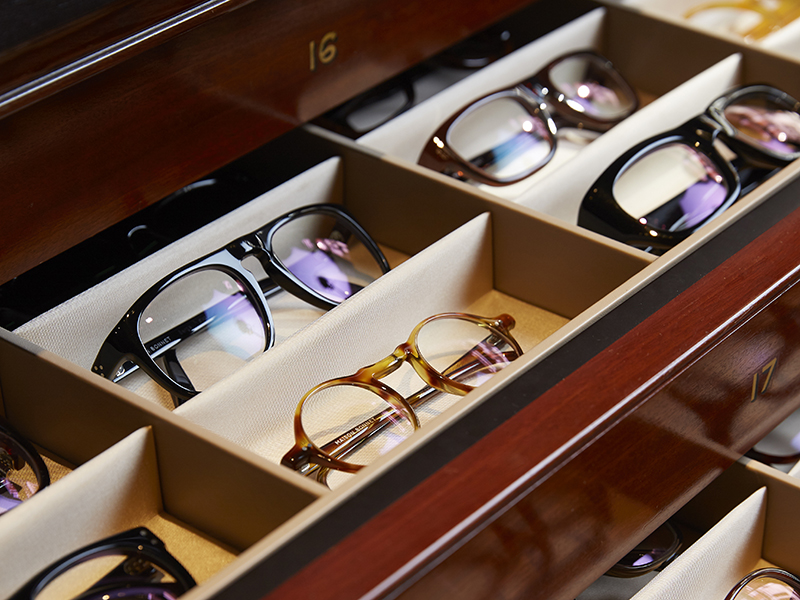
When designing for a new client, Bonnet first seeks to understand their personality, “guessing what they are not ready to share.” Then he looks at frame shapes, drawing from a library of hundreds. The materials come last. Frames are offered in acetate, low-allergy organic composite materials, buffalo horn, vintage tortoiseshell, and gold.
I’d spend my Wednesdays with the craftsmen, trying to create little objects with the materials at my disposal
“We work like artists,” Bonnet says. “Everything is important: the face’s ergonomy, length of eyelashes, bumps… We discuss everything, from the smallest issues and imperfections, to how they feel, how they live. Each piece is the fruit of a conversation.”
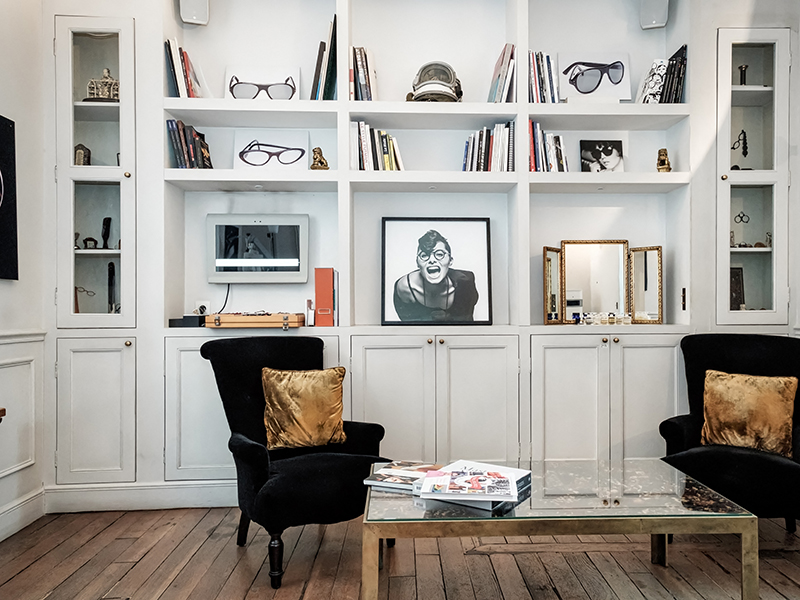
But why bespoke? “Glasses should never take center stage. Your eyes and gaze are what matter. If someone tells you that you have amazing glasses, the frame has caught attention, not your eyes. It’s about the perfect compromise between seeing and being seen. Weight, height, and hair color determine the frame’s shape, thickness, and material… and these must be secondary to bring out the eyes.”
And sunglasses? “They’re the opposite and I become Picasso! We hide the eyebrows, the eyes, the gaze. We can be inventive. We are all about exactness and accuracy, but we love the idea of extravagance, it’s refreshing.”
Bonnet splits his time between the original atelier in Palais-Royal, Paris, and the new boutique in London’s Mayfair, where he will surely add to the roll of famous faces framed by the house. Past clients include architect Le Corbusier and shipping magnate Aristotle Onassis, who was “a great fan of tortoiseshell and bought pairs for his partners Maria Callas and Jackie O.”
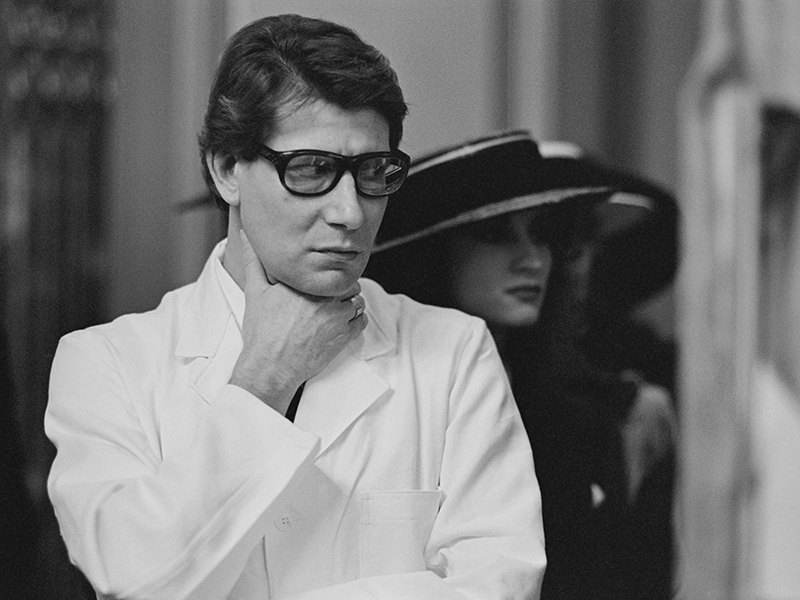
Another loyal customer was fashion designer Yves Saint Laurent, who wore what would become Maison Bonnet’s most iconic pair of all, designed in the 1970s. “My father was the gatekeeper of bespoke eyewear codes; a clear lens meant the eyes should be seen. But Saint Laurent was so shy he wanted big frames to hide everything, including his eyebrows,” Bonnet says. “This began a new future for the firm,” he adds. “While my brothers and I prefer a measured approach, we will break the codes and adapt with pleasure.”
